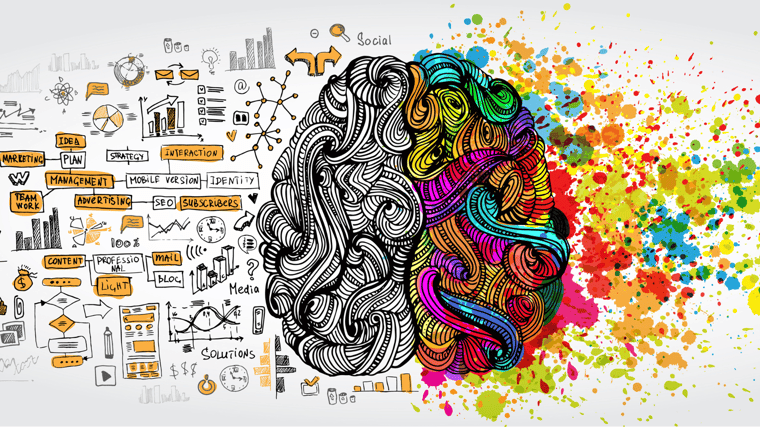Fortune 500 companies have called on Dr. Robert Livingston, social psychologist and diversity consultant, for years to fix DEI problems within their businesses. Many times, they want a “quick fix” to stop the pain that feelings of exclusion are causing, but as he explains in this Harvard Business Review piece, that’s “akin to asking a physician to write a prescription without understanding the patient’s underlying health condition.” Instead, Livingston recommends following three steps before even formulating a solution: 1) Create awareness within the organization that there is a problem, 2) find the root cause as to why there is a problem, and 3) figure out how to make employees feel heard, understood, and accepted. Only when employees experience empathy in the workplace, he says, can a strategy be set in motion to stop exclusion and inequality.
If the core of your DEI training does not involve teaching empathy, it’s time to re-examine your curriculum. As Livingston says, “Corporate leaders may not be able to change the world, but they can certainly change their world.”
Why empathy and DEI go hand in hand
It’s no secret that diversity, equity, and inclusion are critical to attracting top talent. In fact, according to research conducted by Monster, almost two-thirds of employees (62%) would turn down a job offer if it came from a company with a culture that didn’t support diversity. According to Harvard Business Review, an organization with a diverse workforce generates 19% more revenue. Mainly, because diversity brings different experiences, skills, and knowledge that help organizations solve problems differently and innovate.
So yes, DEI has to be a top priority in every organization’s training program.
But for leaders and employees of all backgrounds to fully grasp the subject matter involved in your DEI program, they have to be able to put themselves in each other’s shoes. Empathetic leaders see talent and skill rather than gender and ethnicity. Employees who feel understood are more likely to express ideas without fear—contributing greatly to their career growth and organizational improvements.
Long story short? For DEI changes to be meaningful and sustainable, empathy in the workplace must be instilled.
Teaching empathy allows members of organizations to:
- Understand perspective, which means seeing a situation through someone else’s eyes.
- Recognize emotion, which means identifying with what someone else is feeling, and tapping into that feeling within themselves.
- Avoid judgment, which means resisting the urge to jump to conclusions and instead listening to (and attempting to understand) someone else’s ideas.
- Communicate clearly, allowing them to voice an understanding of someone else’s emotions, and to validate them.
How to grow a culture of empathy in the workplace
At the heart of your DEI training should be strategies for making all backgrounds feel seen, heard, and understood. Here are some ideas to get started:
Tap into employee voices
When employees are invited to share their opinions and insights, leaders can better make changes that support every team member. Periodically send surveys about opinions on company culture, and encourage employees from all backgrounds to share their thoughts and experiences. For employees to feel unjudged, they need a safe space to freely share their ideas and concerns without fear of rejection and failure.
Practice active listening
If employees don’t feel heard when they ask questions or raise concerns, it could keep them from feeling psychologically safe at work. Leaders must learn to make all employees feel comfortable and accepted by being completely present during conversations. Sit still, make eye contact, and press pause on other tasks. Listen closely to what employees say instead of going into a conversation to change their beliefs. And most importantly, make it a goal to learn more about their point of view and why it makes sense to them.
Replace the Golden Rule with the
Platinum Rule
We’ve all heard of the Golden Rule, “Do unto others as you would have them do unto you.” But a basic directive of showing empathy in the workplace is to treat others not as you want to be treated, but as they want to be treated. This is what is known as the Platinum Rule. It could mean using inclusive language or using a person’s preferred pronouns. It means accounting for a diversity of cultures, needs, and feelings, and recognizing that what is important to one person may not be important to another—and vice-versa.
Make volunteering a requirement
Research indicates that the act of volunteering can increase our empathy levels. Doing something meaningful for someone in need puts employees’ challenges in perspective and helps them understand that there is a world outside their own. Partner with charitable organizations and require that team members spend a certain amount of hours each month or each year donating their time to make a difference.
Implement new policies that make all backgrounds feel important
Organizations can talk about the importance of empathy in the workplace all day, but actions speak louder than words. Employees need to see with their own eyes that changes in DEI are being made. Some ways to show staff members that your company values diversity are to:
- Recognize religious holidays from all religions, and create work schedules to allow all employees to take the necessary time off for their celebrations.
- Offer weekly coaching and feedback sessions that enable leaders and employees to discuss how they build trust and a sense of belonging.
- Improve diversity in your hiring pipeline by using recruiting resources that provide more diverse talent pools. Use intentionally inclusive language in job postings to further this effort.
Integrate the subject of empathy into your DEI training
Contrary to popular belief, empathy is a skill that can be learned and developed. Companies must place empathy at the forefront of their DEI training programs to sustain change and eliminate exclusion.
HSI Blue Ocean Brain produces lessons for improving emotional intelligence, delivered in bite-sized sessions that conveniently fit into the workday. Check out these free lessons to experience why companies around the globe partner with us to achieve their training goals.



![[New eBook] Building a Culture of Psychological Safety](https://blog.blueoceanbrain.com/hs-fs/hubfs/Stock%20Photos%20%2883%29-1.png?width=760&name=Stock%20Photos%20%2883%29-1.png)
